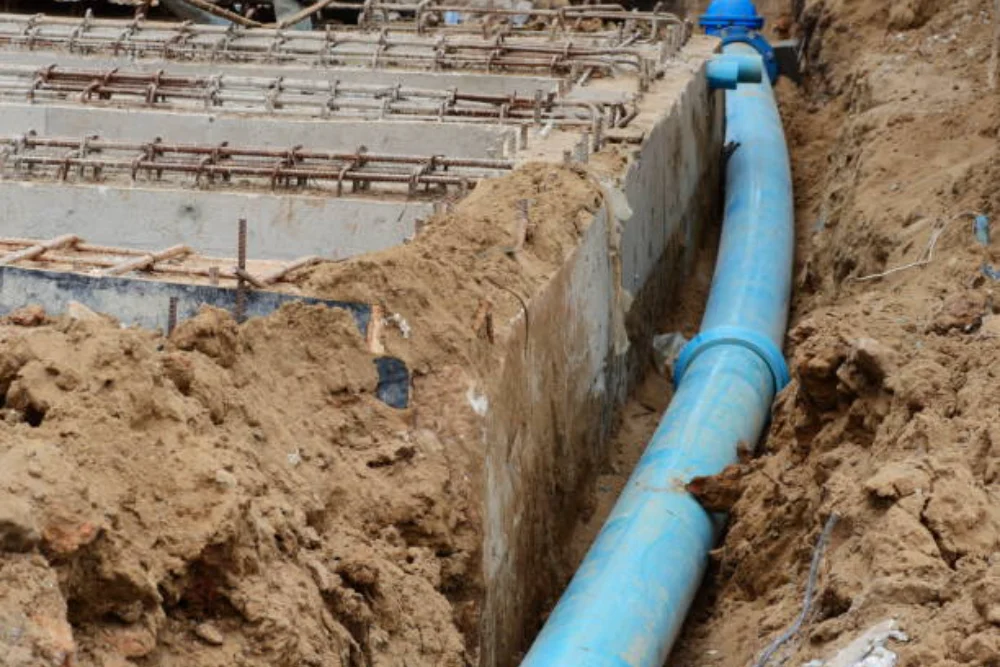Does a Sewer Line Belly Need to Be Replaced?

If your plumbing is malfunctioning and you’re experiencing foul odors or frequent blockages, you may have a larger problem beneath. One of the most commonly neglected issues in sewer systems is a drooping or dipped part known as a belly. But the major question is: Does a sewer line belly need to be replaced? Let’s go over the indications, causes, and remedies so you can make the best decision for your house and budget.
What Is a Belly in a Sewer Line?
Before we begin replacing or repairing a sewage line, it’s important to understand what is a belly in a sewer line.” A belly is a portion of a sewer pipe that has sunk, producing a low spot for water and garbage to accumulate.
Sewer systems are designed to transfer garbage with gravity. So, when there’s a belly, water doesn’t flow easily. Instead, it collects in the sinking part, causing accumulation, obstructions, and even possible collapse.
How Does a Sewer Line Belly Occur?
These bellies do not emerge overnight. They frequently develop over time as a result of shifting soil, water erosion, improper installation, or pipe age. Tree roots, ground movement from construction, and even dramatic temperature fluctuations can all cause the line to droop.
How Common is a Sewer Line Belly?
You might be shocked to learn how many households have this issue. It is common in locations with older homes and low soil stability. Even newer homes are not immune if the sewage pipe is installed without sufficient support or slope.
What Are the Signs of a Sewer Line Belly?
Most people won’t realize they have a belly until problems start showing up. Watch for these warning signs.
Recurring Drain Clogs or Slow Drains
If you’re reaching for the plunger too frequently, the problem may not be with the drain—it might be a belly deeper down the line.
Gurgling Sounds from Toilets or Drains
Trapped air in a sagging pipe can produce bubbling or gurgling sounds. It’s as if your plumbing is trying to communicate—and it’s not saying anything positive.
Sewage Smells in the Yard or Home
Standing waste in the belly can release gases that emit bad odors. If you smell sewage but it is not coming from the garbage, it might be a problem with your pipes.
Wet Patches or Sinkholes in the Yard
Sewer belly leaks can soak your soil, resulting in wet places or, in the worst-case scenario, sinkholes. These are not only cosmetic issues; they indicate structural pipe deterioration.
Sewer Camera Inspection Findings
A camera check is the most effective approach to confirm a belly. It displays pools of water, pipe angles, and even damage that would otherwise be invisible.
Does a Sewer Line Belly Need to Be Replaced?
Now, let’s address the key question: does a sewer line belly need to be replaced? It is determined by the severity of the sag, the length of time it has been there, and the problems it has caused.
How Serious Is a Belly in the Sewer Line?
A small belly may not create immediate problems. However, if water and garbage accumulate on a regular basis, major difficulties may arise. It can even push sewage back into your home. At that point, it’s not a matter of if, but when the line has to be repaired.

Factors That Determine Whether Replacement or Repair Is Needed
Let’s go over the criteria specialists examine when determining whether to fix or replace.
Length and Depth of the Sewer Line Belly
Small bellies under two feet in length may be suitable for localized repair. Larger or deeper ones? Often, they require complete replacement.
Age and Material of the Sewer Pipe
Clay or cast iron pipes are not long-lasting. If the pipe is old and fragile, a full replacement is typically safer and less expensive.
Frequency of Sewer Line Issues
If you’re calling your plumber every few months, it’s a clear indicator that the pipe is failing. Constant backups suggest that the belly is more than simply a little droop.
Accessibility of the Problem Area
If the belly is beneath a concrete slab or a huge tree, the work required to access it may make replacement more cost-effective than repair.
What Problems Can a Sewer Line Belly Cause?
Ignoring a belly does not make it vanish. Here’s what may go wrong.
Waste and Water Buildup Leading to Backups
Collecting garbage slows things down. It eventually clogs entirely, causing sewage to back up into sinks, bathtubs, and toilets.
Pipe Collapse or Blockages
A belly increases strain on the pipe walls, particularly if it contains garbage. Over time, this might result in cracking or collapse.
Contamination and Hygiene Risks
Leaky garbage is hazardous. It can pollute soil and groundwater, posing health concerns to your family and neighbors.
Increased Repair and Maintenance Costs Over Time
Frequent cleanings and patching add up. Rather than spending money year after year, replacing the issue area might be more cost-effective.
How to Fix a Belly in the Main Sewer Line
Do you think your sewage line is in trouble? Here’s how to take it step by step
Identify the Symptoms
Begin by looking for indicators such as foul odors, sluggish drainage, or strange yard patches.
Schedule a Sewer Camera Inspection
Only a competent examination can confirm what is a belly in a sewer line and pinpoint its location and severity.
Evaluate the Severity and Scope
Your plumber will evaluate the depth of the belly and how far it extends down the pipe.
Choose the Right Repair Method
Minor sags may be repairable without a trench. For large bellies, complete replacement is frequently recommended.
Prepare the Area for Repair or Replacement
This might include excavating, permits, and preparing your yard or flooring.
Perform the Repair or Replacement
The belly is repaired by elevating or replacing the pipe and creating an appropriate slope for smooth drainage.
Test the Sewer Line
Once the repair is completed, the line is tested with water and cameras to ensure that it works properly.
Restore the Area
Your yard or flooring is fixed so that everything seems to be normal.
FAQs
What Is the Life Expectancy of a Sewer Line?
Modern sewage lines can endure between 50 and 100 years, depending on the material and climatic circumstances.
How Long Does it Take to Replace the Main Sewer Line?
Typically, it takes 1 to 3 days, although difficult sites or permissions might cause delays.
How Do I Know if My Sewer Line Needs to Be Replaced?
If you’re experiencing frequent backups or your camera has a huge belly, it’s probably time for a replacement.
Think You Might Have a Sewer Belly? Call Wally Blanton Plumbing & Sewer
Still wondering, “Does a sewer line belly need to be replaced?” A short examination might help you avoid a pricey emergency down the line. Sewer line bellies are more than simply an annoyance; they indicate a deteriorating system.
Wally Blanton Plumbing provides honest advice and expert service to ensure your plumbing runs properly. Whether it’s a little repair or a complete replacement, we have you covered with competent solutions and peace of mind.
